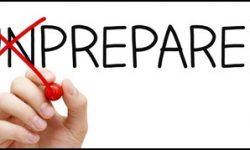Whilst opinions differ on the value of having a ‘Routine Stack’ (a structured list of routines), and the mere topic often promotes debate within the pick up community, I personally found having a stack really helped my development in game. For me it was useful to have early Instant Value Demonstration (IVD) and DHV material scripted in a logical order and ready to go, freeing me up to concentrate on my body language, kino, compliance testing and the development of calibration skills.
As my game improved I moved away from stacks, but I still consider them to be a particularly useful development tool for the beginner and intermediate PUA. In fact a year or two back I began to insist that all my new 1 on 1 students developed personalized stacks before I took them infield. This ensured I could concentrate on their key development areas without the variability of them throwing in routines in a random (and sometimes inappropriate / inefficient / illogical) order. This approach tended to work very well for them, so my support for stack use was reinforced.
A well thought out stack can provide rapid DHV uploads, include multi-threading, boost buying temperature, initiate kino, and test compliance all within a short time period and often without doing too much thinking. This is one of the key reasons stacks are useful for those progressing in game. Ever been in set trying to figure out what to say next? Used a comfort routine that didn’t work out because you through it in too early? Stacked multiple openers and didn’t generate attraction? These types of problems can be removed from your game very early on via the use of a routine stack.
For brevity in this article I’ll describe my favored stack format covering Opening and A2 of the teachings Mystery developed, in my next article I’ll continue running through into A3 and include a typical time bridge and number close routine I’ve used often.
So…In simple terms the basic MM Open/A2 stack format I have used most is…
• OPENER (with FTC and Neg)
• FTC
• IVD#1
• DHV Story#1
• Confirm 3 IOI’s? If yes then Qualify (Move into A3 stack), Or…
• DHV Story#2
• Confirm 3 IOI’s? If yes then Qualify (Move into A3 stack), Or…
• Continue with IVD #2 or DHV #3 and Qualify (Move into A3 stack)
I find that if your first piece following the opener provides the girls with something of value (i.e. an IVD), such as interesting information about them, then they are more likely to hook and listen to your following DHV loaded story. So as an example #1…
PUA: OPENER/FTC: Hey guys, just quickly…Is kissing cheating?
HB’s: blah blah blah
PUA: NEG: Hey, are those real nails? They look nice anyway.
PUA: OPENER CONTEXT: Its just my buddy’s girlfriend, she likes to get with other girls…etc.
HB’s: blah blah blah
PUA: FTC: Anyway, I gotta go, but I just noticed…
PUA: IVD: “Group cold read” – …something interesting about this group, well she seems like the mother hen, always looking after you all, you seem like the wild one…etc
HB’s: Blah blah blah
PUA: DHV Story #1: Respect. Actually though, you remind me of a girl I used to know…etc.
HB’s: blah blah blah
I’ve not included all the details of the routines, you could use any appropriate OPENERs/IVDs/DHVs, its just to demonstrate how despite human interaction being non-linear, you can control where the conversation goes by cutting their threads when they milk your topic and stacking forward to your next piece. They can be saying anything in the ‘blah blah blah’ areas, but in the end I’m gonna get my next important IVD/DHV piece across regardless. Another example…
PUA: OPENER/FTC: Hey guys, just quickly…Who lies more, men or women?
HB’s: blah blah blah
PUA: NEG: Hey, how short are you?
PUA: OPENER CONTEXT: I saw an article today talking about how often men / women lie…etc.
HB’s: blah blah blah
PUA: FTC: Anyway, I gotta go, but I just noticed…
PUA: IVD: ….You have a C shaped smile…etc
HB’s: Blah blah blah
PUA: DHV Story #1: Respect. Hey get this, last time I was in this place the craziest thing happened…etc
HB’s: blah blah blah
Straightforward and effective, first 5 or 6 minutes of the interaction accomplished time and time again.
In summary, its my view that a stack allows you to plan the early stages of your interactions, making them efficient by ensuring the set has heard your key leader/protector/pre-selection attraction material without you having to think too much about how to get this info across. I’ve found this can remove some of the variability of your first few hundred sets and frees you up to notice whats going on with body language, IOI’s, compliance levels etc.
Big Love,
Caddy





